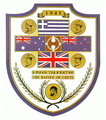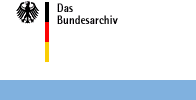|


-
18.09.05 12:56:57
-
letzte Bearbeitung


Kreta/Heraklion


Volksbund Deutscher
Kriegsgräberfürsorge e.V.



- PROCAT
Reader
- the national archives

- Museum auf Kreta



| |

RAF at Crete
Of the two
aerodromes, Maleme and Heraklion, only the latter could be used for all types of
plane. Construction was still going on at both. At Retimo the aerodrome was no
more than a landing strip; and at Pediada Kastelli there was a landing ground.
The fact that the RAF was responsible for the construction of its own airfields,
and the absence of co-ordination with the military in the initial stages, were
all the more important because it was the position of these aerodromes that
largely determined the dispositions of the defence.
At Maleme also
was 252 AMES in full operation and feeding information to a Gun
Operations Room at Canea, ultimately developed to control the fighter and AA
defences of Suda Bay area but still without RAF controllers or operations
officers, being served by FAA staff. And there was no R/T between Gun Operations
Room and aircraft. A second (220) AMES at Heraklion was in the final stages of
erection but its Gun Operations Room was not yet complete. These deficiencies
and shortcomings were to some extent offset by an efficient Greek observer
system, which reported to a centre in Canea from which reports were relayed to
the Canea Gun Operations Room.
His force seems
to have been increased almost at once by the basing of Sunderlands of 230
General Reconnaissance Squadron at Suda Bay. These were intended to assist in
evacuating troops from Greece to Crete and from Crete to Egypt. Further
reinforcement came with the move out of Greece of the squadrons that had been
operating there. No. 30 Squadron, with 14 Blenheims I, arrived on 18 April and
was subsequently supported by 203 Squadron from Egypt with nine Blenheims IV.
And between 22 and 24 April came the remnants of 33, 80, and 112 Fighter
Squadrons, all in a low state of serviceability which on Crete could hardly be
remedied. Among them they could muster at the most 12–14 Hurricanes and about
six serviceable Gladiators. All of these were engaged in the protection of
convoys from Greece and so had little chance of preparing for an attack unless
it should be most improbably delayed.
In February
1941 aircraft from the Illustrious (heavily dive-bombed west of Malta the
month before) were transferred to Maleme, reinforced by fighters from Egypt,
moved to southern Greece, and in five weeks sank five Italian ships, damaged
five more, and attacked Brindisi. The squadron returned to Maleme, now under RAF
command (it should be noted), the Swordfish and Blenheims returned to Egypt, and
the Fleet Air Arm and RAF pilots took turns in flying the handful of Hurricanes,
Fulmars and Gladiators. On 17 May only one plane, a Hurricane, was airworthy;
it was piloted by Lieutenant A. R. Ramsay, RNVR, who had shot down two
enemy aircraft the day before. This steadfast officer's testimony will be given
later.Thus the situation found by Wing Commander Beamish on 17 April when he
arrived to take command of the RAF on the island was far from reassuring. There
was only one squadron. The only planes there were at Maleme and belonged to 805
FAA Squadron. Their primary role was to provide fighter defence for Suda Bay.
But the squadron was operating at a reduced strength and consisted of a mixed
force of Fulmars, Gladiators and Brewsters, of which the last could be flown
only in an emergency.
- Defence of Maleme airfield
The New
Zealanders at first had no guns; but an independent command, the Mobile Naval
Base Defence Organisation (MNBDO) of the Royal Marines, under Major-General C.
E. Weston, had already deployed an assortment of artillery, mainly at Maleme.
Two 4-inch coast guns were on the hillside immediately south of the airfield,
together with two 3-inch heavy antiaircraft guns, and a handful of Bofors guns
encircled the landing strip. None of these were under New Zealand command, a
serious error of the defence, which made it impossible to co-ordinate the
defence of this all-important airfield. Further confusion resulted from the
presence of Fleet Air Arm and RAF ground staffs and the specialists operating
a secret radar installation known as the Air Ministry Experimental Station
(AMES).
-
-
805 Squadron
FAA
- 805
Squadron formed Feb 1941 with 12 Fairey Fulmar two-seat fighters, carrier
capable, to support a planned invasion of Rhodes, off the coast of Turkey,
held by Italians. Squadron leader Lt Cmdr Alan Black, Fleet Air Arm. Based
at Maleme in northeastern Crete. That seems to have been the Brewster's only
sortie from Crete. In the British Order of Battle on April 5, 805 Squadron
is shown only as having Fulmars and Sea Gladiators on strength, and by the
end of April: "The two remaining Buffalos were also totally unservicable
now." When German paratroopers over-ran Crete at the end of May, the
Brewsters were apparently left in the boneyard. German photographers
delighted in photographing their planes landing over the hulk of a derelict
Brewster.
-
-
203 Squadron
-
 -
-
With war
imminent, the 203 Squadron, now equipped with Singapores, flew to Aden and
converted shortly after to Blenheims. After the Italian declaration of war in
June 1940, No 203 became heavily involved in the East Africa campaign before
moving on to Crete to cover the evacuation of the beleaguered island. The
Squadron flew anti-shipping patrols around the Middle and Far East with a
variety of types including Baltimores, Wellingtons and Liberators, remaining
in Ceylon until May 1946 when it returned to Leuchars and then St Eval and to
re-equip with Lancasters.
-
-
80 Squadron
In February
1941, No. 80 Squadron started to convert to Hurricanes, and after evacuation
from Greece the Squadron spent a period in Syria, Palestine and Cyprus before
returning to the Western Desert in October flying patrols in the area until
the Battle of Alamein. With the retreat of the Afrika Corps, No. 80 was given
the task of providing air defence of the long line of communication and
coastal convoys supplying the 8th army until January 1944 when the Squadron
moved to Italy. In April 1944 No. 80 moved back to the UK and, equipped with
Spitfires, began flying sweeps and escort duties over France and the Low
Countries. In August 1944 it converted to Tempests which it took to the
Continent at the end of September to fly armed reconnaissance missions for the
rest of the war.
30 Squadron
-
No. 30 Squadron.
Bomber
escort duties in the Western Desert were followed by a move to join the
unsuccessful defence of Greece in March 1941 during which time Hurricanes
arrived, only to be evacuated to Egypt in May as the defending forces
retreated.
-
33 Squadron
-
- With
the outbreak of World War II, No. 33 moved to the Western Desert, active
action beginning with the entry of Italy into the War in June of 1940.
Conversion to ground attack Hurricanes was completed some six months later.
Following the disastrous defence of Greece in 1941.
With the
exception of a time in Greece in 1941, 33 Sqn remained in the Middle East
for most of World War Two. Equipped initially with the Hurricane, the
squadron flew in support of the Army in the Western Desert, including at the
Battle of El Alamein
before
returning to the UK in April 1944 and receiving Spitfires.
112 Squadron

On 16 May 1939, No. 112 reformed aboard the aircraft carrier
'Argus' at Southampton for transportation to the Middle east, arriving in Egypt
ten days later. Gladiators were recieved in June and when Italy joined the war a
year later the Squadron flew fighter patrols over the Western Desert. In January
1941 No. 112 moved to Greece to provide air defence and fly offensive patrols
over Albania. When the Germans invaded Greece the Squadron provided fighter
cover for the Athens area until evacuated
first to Crete and then back to Egypt.
On 22 April 1941 the 112 Squadron was ordered
to leave for Heraklion, Crete.When the squadron arrived at Heraklion only six of
its 14 Gladiators were serviceable. It was decided to send one flight back to
Egypt therefore, and on the toss of a coin the eight pilots of ‘A’ Flight flew
out in a Bombay, the flight’s ground crew following by sea next day. Ten pilots
remained under Flight Lieutenant Fry, hoping to receive early reinforcements of
Hurricanes; their strength was rapidly augmented by the arrival of six new
pilots from 1430 Flight, recently arrived from East Africa, under Flight
Lieutenant J. E. Dennant.
On 16 May 112 Squadron was preparing to put
its two new Hurricanes into use at Heraklion, but only three pilots had
previously flown the type, and only Flight Lieutenant Fry had any real
experience. Crete was hardly the ideal place to undertake operational training,
but most pilots managed to get at least one flight between raids. When yet
another strafing attack by Bf110s approached – this time undertaken by thirty
aircraft of I and II/ZG 26 – both Hurricanes and three Gladiators were ordered
off. Fry in Hurricane V7857 managed to bounce eight Bf110s at 6000 feet and hit
Unteroffizier Erhard Witzke’s 3U+SM of 4 staffel. Unfortunately for him, as he
broke away Witzke’s gunner, Feldwebel Karl Reinhardt, got an accurate burst of
fire into the Hurricane’s engine and it streamed glycol. Fry was forced to bale
out. Struck a glancing blow by the tailplane as he did so, he landed three miles
from the airfield with a badly bruised chest. Meanwhile Witzke’s Bf110 was
forced to ditch as he struggled to get back to Argos, when the damaged port
engine failed. Rescued from the sea by a Crete fishing boat, the crew was
brought back to Crete where they were hospitalized.
The second Hurricane had come under attack by other Bf110s, and force-landed
after sustaining damage, but Bofors gunners of 7th Australian Light AA Battery
hit U8+MK of 2 Staffel, this aircraft crashing into the sea with the loss of
Unteroffizier Erwin Bauer and Gefreiter Karl-Heinz Heldmann.
Because of his wounds Fry was not able to
escape when the island fell to the Germans a few days later, and he spent the
rest of the war as a POW. He was awarded a DFC, gazetted after his capture and a
Greek DFC. Fry ended the war with 4 biplane victories and a total of 5. After
release from the POW camp he applied for a Permanent Commission, but this was
not granted, as he was now too old for his rank, still being an Acting Flight
Lieutenant, as he had started the war, no promotion having been made whilst he
was in prison camp.
230 Squadron
 -
- The
basing of Sunderlands of 230 General Reconnaissance Squadron
is
at Suda Bay
for April and May 41.
These were intended to assist in evacuating troops from Greece to Crete and
from Crete to Egypt. Further reinforcement came with the move out of Greece
of the squadrons that had been operating there
zum Seitenanfang
|
